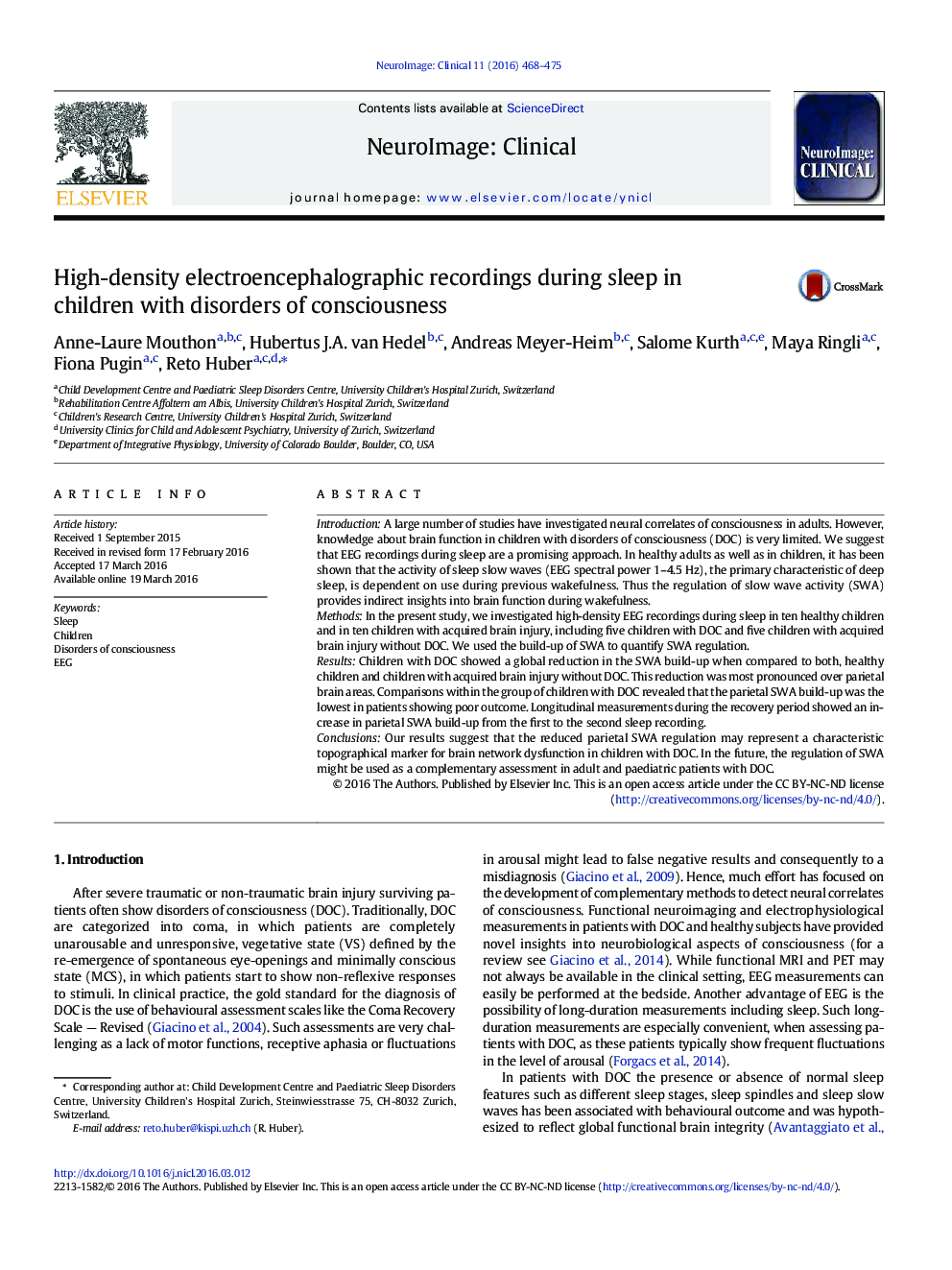| کد مقاله | کد نشریه | سال انتشار | مقاله انگلیسی | نسخه تمام متن |
|---|---|---|---|---|
| 3074938 | 1580956 | 2016 | 8 صفحه PDF | دانلود رایگان |
• Longitudinal high-density EEG recording in children with disorders of consciousness
• Sleep electrophysiology provides a marker for brain network dysfunction.
• The sleep EEG might be used as a complementary assessment in paediatric patients.
IntroductionA large number of studies have investigated neural correlates of consciousness in adults. However, knowledge about brain function in children with disorders of consciousness (DOC) is very limited. We suggest that EEG recordings during sleep are a promising approach. In healthy adults as well as in children, it has been shown that the activity of sleep slow waves (EEG spectral power 1–4.5 Hz), the primary characteristic of deep sleep, is dependent on use during previous wakefulness. Thus the regulation of slow wave activity (SWA) provides indirect insights into brain function during wakefulness.MethodsIn the present study, we investigated high-density EEG recordings during sleep in ten healthy children and in ten children with acquired brain injury, including five children with DOC and five children with acquired brain injury without DOC. We used the build-up of SWA to quantify SWA regulation.ResultsChildren with DOC showed a global reduction in the SWA build-up when compared to both, healthy children and children with acquired brain injury without DOC. This reduction was most pronounced over parietal brain areas. Comparisons within the group of children with DOC revealed that the parietal SWA build-up was the lowest in patients showing poor outcome. Longitudinal measurements during the recovery period showed an increase in parietal SWA build-up from the first to the second sleep recording.ConclusionsOur results suggest that the reduced parietal SWA regulation may represent a characteristic topographical marker for brain network dysfunction in children with DOC. In the future, the regulation of SWA might be used as a complementary assessment in adult and paediatric patients with DOC.
Journal: NeuroImage: Clinical - Volume 11, 2016, Pages 468–475
